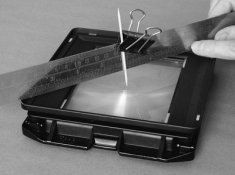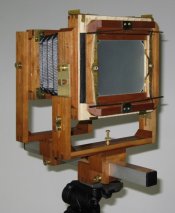Jim Chinn
Member
This is a reprint from an article in Photo Techniques magazine about grinding your own glass.
http://www.dokasphotos.com/techniques/ground_glass/
The author discusses using aluminum oxide as an abrassive. I used two different abrasive levels of automotive valve grinding compound which uses aluminum oxide. Just as in the article it took a lot longer than 20 minutes for mine IIRC.
http://www.dokasphotos.com/techniques/ground_glass/
The author discusses using aluminum oxide as an abrassive. I used two different abrasive levels of automotive valve grinding compound which uses aluminum oxide. Just as in the article it took a lot longer than 20 minutes for mine IIRC.
Last edited by a moderator:





 Wait till I tell the guys!!!
Wait till I tell the guys!!! )
)